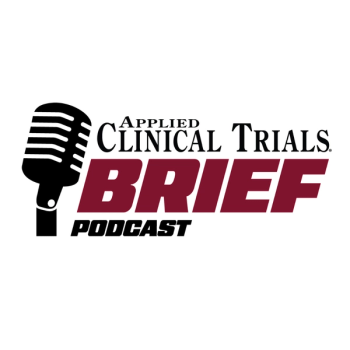
How COVID is Forcing a Reckoning in Respiratory Clinical Trials
Pandemic has brought new sense of awareness to respiratory diseases and clinops.
Introduction
The pandemic experience has been sobering on many levels: As we’ve pressure tested our health systems, we’ve exposed systemic weaknesses, especially in how we address declining lung health. Respiratory disease was already among the leading causes of death globally; now, with COVID, the sense of urgency is even more acute.
Today, patients with “long COVID” or related complications are straining many health systems.And according to researchers at Penn State College of Medicine, more than half of the 236 million patients diagnosed with COVID worldwide since December 2019 will experience post-COVID symptoms up to six months after recovering.
As investment in long COVID research grows, so too will focus on lung and respiratory disease overall, and this will lead to greater scrutiny of respiratory clinical trials and the high costs and failure rates. One area of focus will be the systemic implications of endpoint subjectivity. Existing endpoints used in respiratory trials, such as physical activity performance for COPD, asthma, and idiopathic pulmonary fibrosis, “represent a challenging domain to accurately measure,” and this underscores the need for biomarkers and more precise endpoints that better predict patient response.
Eliminating subjectivity
There is no single reason respiratory clinical trials fail, but the inability to recruit and retain suitable cohorts is certainly among them. Recruiting challenges have led many to suggest that overly rigid inclusion criteria are to blame, but that’s a double-edged sword. A looser set of inclusion criteria can pull in more participants, but at the risk of creating an overly heterogeneous subject pool with the potential to increase variability and trial failure. Precision imaging phenotypes help study designers of respiratory trials strike the right balance in setting inclusion criteria that’s highly targeted, yet feasible for recruitment.
Instead of unnecessarily restricting the addressable trial population, objective, highly quantifiable measures provide an even stronger basis for expanding recruitment. Much of what’s needed to identify and qualify more suitable candidates—existing CT scans for example—is readily available. The biomarkers are not only there to guide study recruitment but also to establish multiple endpoints for “lung intelligence” that enables even deeper, more granular analysis of mechanisms of action.
Natural language processing (NLP) and artificial intelligence (AI) are also showing tremendous potential to improve clinical trial recruiting. This is true in the early stages of design, where NLP and AI can be used in literature review and to mine studies retrospectively, and throughout a study, and where more precise endpoints, such as AI-enabled biomarkers in an acute respiratory distress syndrome trial, can help investigators establish rigid but more quantifiable criteria that effectively expand access to a larger addressable trial population.
In the case of drug trials for lung and respiratory therapies, this increasing focus on AI and AI-enabled biomarkers is transformative. Now, where highly subjective results from a six-minute walk test were once a standard of care for patient inclusion and assessing mechanisms of action, we can now use more objective and precise measures such as air trapping, mucus plug scoring, total airway count (TAC), and tissue density metrics. As stated by pulmonologist Marc Miravitlles, MD, PhD: “A drug that is expected to interfere with the progression of emphysema should be evaluated by changes in lung density (HRCT) and not by its possible effect on spirometry, exacerbations, or St. George Respiratory Questionnaire (SGRQ) scores. Choosing the right primary outcome may have a strong impact on the future of treatments for emphysema in patients with COPD.”1
A good example of precision imaging’s impact on therapy response is from a recent 180 subject alpha-1 COPD trial in which CT-based imaging biomarkers showed a 34% reductionin the rate of decline of lung density; meanwhile, conventional tests (spirometry, questionnaire, and exacerbation rates) showed no impact of the therapy.2
Expanding trial optionality
Having more precise measures give trial sponsors options that didn’t previously exist, including how and where trials take place. One of the serendipitous outcomes of COVID has been wider-spread acceptance that decentralized trials can be viable and beneficial for sponsors and patients alike. During the height of the pandemic, for example, medical device companies began offering “at home” tools to avoid trial disruption, including home spirometry kits to remotely assess lung function.
A recent Morning Consult poll suggests that the public is more than ready. Roughly four in five adults say it’s important that trials are easy to get to and diverse. Moreover, adults were more likely to be interested in participating in a clinical trial if site visits were virtual or took place closer to them, even if closer was a retail clinic versus a hospital.3
Policymakers are also focused on the potential of expanding clinical trial participation and optionality. Likely persuaded by the progress made during the pandemic, for both COVID- related and ongoing non-COVID trials, the 21st Century Cures Act 2.0, Section 310, directs the Secretary of Health and Human Services to “convene a multistakeholder meeting to explore innovative ways and incentives to foster the adoption of decentralized trials.”
According to a recent McKinsey report, pharmaceutical sponsors have also done a rapid pivot in the face of COVID. Pre pandemic (2019), an Industry Standard Research survey found that 38% of pharma and contract research organizations expected virtual trials to be a major component of their portfolios. When McKinsey asked the same questions a year later, 100% said yes.4
A decentralized model for respiratory clinical trials is increasingly more viable, even in those that involve precision imaging. Having precise, objective criteria for recruiting means that multiple, geographically distributed sites can now do the work of a few larger sites, and more efficiently. With new technologies such as AI and assiduous data management we can reduce site-to-site variability in data collection, instrument calibration, training and other requirements and cast a wider net for viable trial candidates.
Maximizing ROI from available data
Trillions of terabytes of healthcare data are captured each day, yet so little of that data is made actionable. This missed opportunity is especially concerning when it comes to data from the height of the pandemic and, moving forward, long COVID. We have an opportunity in lung and respiratory disease to pool data on a massive scale, and the learnings from that collaboration would accrue to clinical trial performance across all disease areas.
Some, including contributors to this publication, argue for the importance of data and AI in helping streamline regulatory reviews. “AI can handle the quantum increase in data for regulatory domain by processing tedious tasks and increasing the speed and accuracy of certain regulatory functions such as regulatory information processing, generation of impact analysis reports, gathering insights on current trends, etc.”5 Accelerating regulatory review while improving accuracy would be a game changer.
With AI, we also have the luxury of retrospective analysis. Retrospective analyses, looking into past or similar trials, can guide decision-making about proceeding to a next trial phase and, equally transformative, can provide new and deeper insights about mechanisms of action. Retrospective analyses will have a significant impact on clinical trial effectiveness and cost moving forward.
The potential to mine provider databases, including electronic health records, is limitless. This opens the door for increasing trial access and diversity, objectives the public overwhelmingly supports. Having more precise measures for recruiting, management and oversight improves the overall value proposition for clinical trials, for all stakeholders. The destination is a true matching system that ensures equal access to trials, fewer trial failures and a much better ROI for trial sponsors and society overall.
Fast-tracking clinical trial progress
In the area of respiratory disease, the crisis of the lung has intersected squarely with COVID, and we’re already seeing massive changes in clinical trial design, better recruiting and, soon, more successful outcomes. This progress in lung and respiratory trials is the realization of more than a decade of innovation with AI and AI-enable biomarkers. It mirrors progress with genomic data and reflects a greater willingness to discover and apply more objective measures that improve the speed, equity, and cost-effectiveness of clinical trials.
Equally important in the coming months will be decisive action in Washington and other capitals, such as the FDA’s Biomarker Qualification Program, under the Center for Drug Evaluation and Research, that encourage the validation and widespread application of quantitative biomarkers in clinical trials and as companion diagnostics.
Make no mistake, the issue is a global one. A recent Lancet article, entitled “Respiratory research funding is inadequate, inequitable, and a missed opportunity,”6 calls particular attention to the crisis of the lung, but it advocates for scientific collaboration that would transcend a single disease. The authors see the World Health Organization’s “Coordinated Global Research Roadmap” as the model to emulate. This is yet another unintended, but positive outcome of the pandemic.
Five years from now, if not sooner, respiratory clinical trials will be far less costly, failure rates much lower and therapies more widely and equitably available. COVID may still be with us endemically, but its pandemic legacy will be as a catalyst for widespread and systemic changes in healthcare, including clinical trials. Greater reliance on AI, genomic data, and other more precise imaging measures in respiratory trials and at the point of care will enable massive change, and the hard-won lessons of COVID can and must guide us as we go.
Susan Wood, PhD is president & CEO of
References
- Miravitlles M, Anzueto A. Use of CT Lung Densitometry as Outcome Measure for Emphysema Progression: The Case of Losartan. Am J Respir Crit Care Med. Published online June 2, 2022:rccm.202205-0927ED. doi:10.1164/rccm.202205-0927ED
- Chapman KR, Burdon JGW, Piitulainen E, et al. Intravenous augmentation treatment and lung density in severe α1 antitrypsin deficiency (RAPID): a randomised, double-blind, placebo-controlled trial. Lancet. 2015;386(9991):360-368. doi:10.1016/S0140-6736(15)60860-1
- Morning Consult National Tracking Poll #2112028, December 03-06, 2021,
https://assets.morningconsult.com/wp-uploads/2021/12/20125132/2112028_crosstabs_MC_HEALTH_CLINICAL_TRIALS_Adults.pdf , 12-06-2021 - Gaurav Agrawal, Rachel Moss, Ralf Raschke, Stephan Wurzer, and John Xue, McKinsey’s Pharmaceuticals & Medical Products Practice. No place like home? Stepping up the decentralization of clinical trials.
https://www.mckinsey.com/industries/life-sciences/our-insights/no-place-like-home-stepping-up-the-decentralization-of-clinical-trials , 06-10-2021 - Rohit Kadam, Saurabh Das, Ashutosh Pachisia, Niketan Panchal, Anita Ramachandran, Dr. Ashish Indani, Prashant Chaturvedi. The Future of Regulatory Intelligence with Conversational AI, Applied Clinical Trials,
https://www.appliedclinicaltrialsonline.com/view/the-future-of-regulatory-intelligence-with-conversational-ai , 05-24-2022. - Williams S, Sheikh A, Campbell H, et al. Respiratory research funding is inadequate, inequitable, and a missed opportunity. Lancet Respir Med. 2020;8(8):e67-e68. doi:10.1016/S2213-2600(20)30329-5,
https://pubmed.ncbi.nlm.nih.gov/32763207/ , August 2020
Newsletter
Stay current in clinical research with Applied Clinical Trials, providing expert insights, regulatory updates, and practical strategies for successful clinical trial design and execution.






.png)



.png)



.png)
.png)
